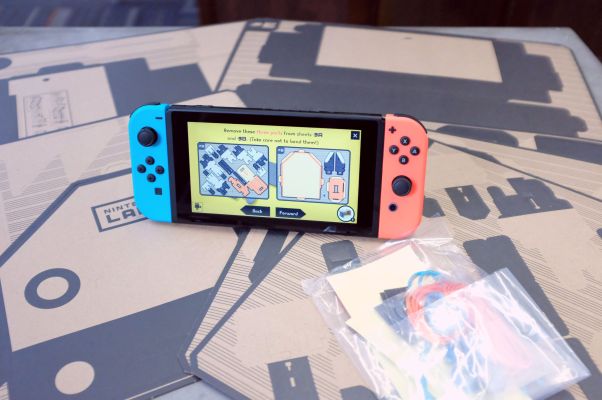I’m here to tell you first-hand: Nintendo Labo is no joke. I’m a grown-up human person, who has spent many hours of his life building things: office furniture, websites, a model of the Batmobile from the 1989 Tim Burton movie. In the fourth grade, I attempted to build Mission Santa Barbara out of sugar cubes. It didn’t go great, but the point (I’m told) is that I tried.
We’re talking multiple decades of building things. Following instructions, backtracking, trying again. I’m sure there are all sorts of valuable lessons I learned along the way; self-discipline, patience, teamwork, why sugar is not a structurally sound building material. But event with all of that building under my wisened belt, Nintendo Labo is no walk in the park.
It’s literal child’s play. It says right there, on the box, “6+.” I’ve been six-plus for — let’s just say… a while now. And yet, it took me around two hours this morning to build a cardboard piano. Now I’ve got a table full of scraps, a small paper cut on my ring finger and a surprise sense of accomplishment. Oh, and the piano is pretty cool, too.
Labo is one of the most fascinating products to come across my desk in recent memory. It’s unique, bizarre and as frustrating as it is fun. In other words, it’s uniquely Nintendo — not so much out-of-the-box thinking as it is the actual box. It’s a product that’s built entirely around the premise of making kids sit still, follow instructions and fold the heck out of some cardboard. And, strangely, it totally works.
Hook, line and sinker
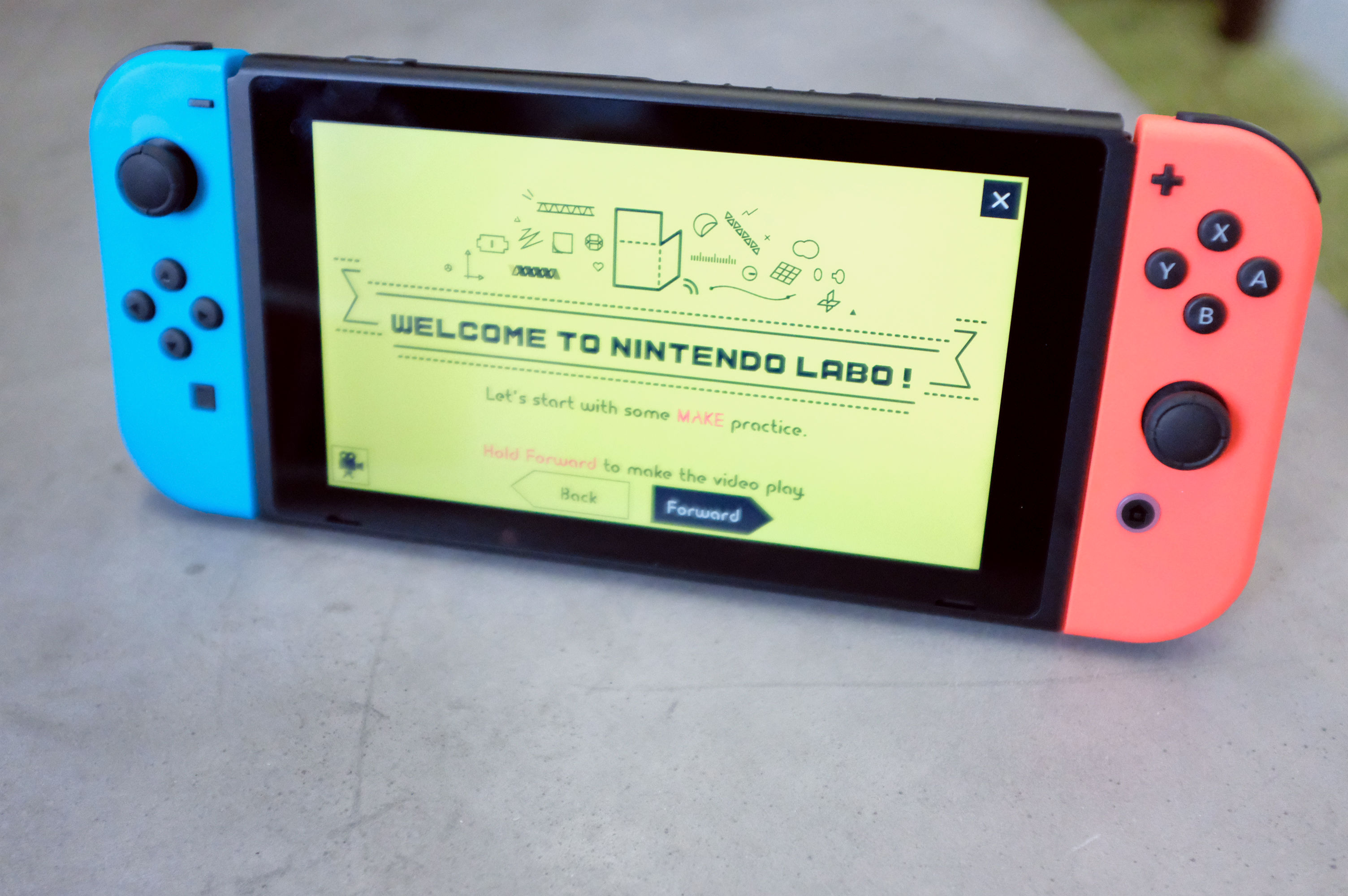
I wouldn’t have been my first choice to review Labo, but I was uniquely qualified, if only for the half a day I spent getting walked through the construction kit with a room full of brightly dressed and infectiously enthusiastic Nintendo employees. That experience served as the foundation for our hands on, as we were broken up into small teams and walked through a pair of increasingly complex projects.
We started with the race cars, the box’s introductory project, which is really as much about getting you used to the strange world of Labo. But even that small starter is a glimpse of the cleverness contained throughout, as the cardboard-wrapped Joy-Cons use their own haptic feedback to propel forward, as you control its speed via the touchscreen. Because there are a pair of Joy-Cons for every Switch, you can use them to race against one another.
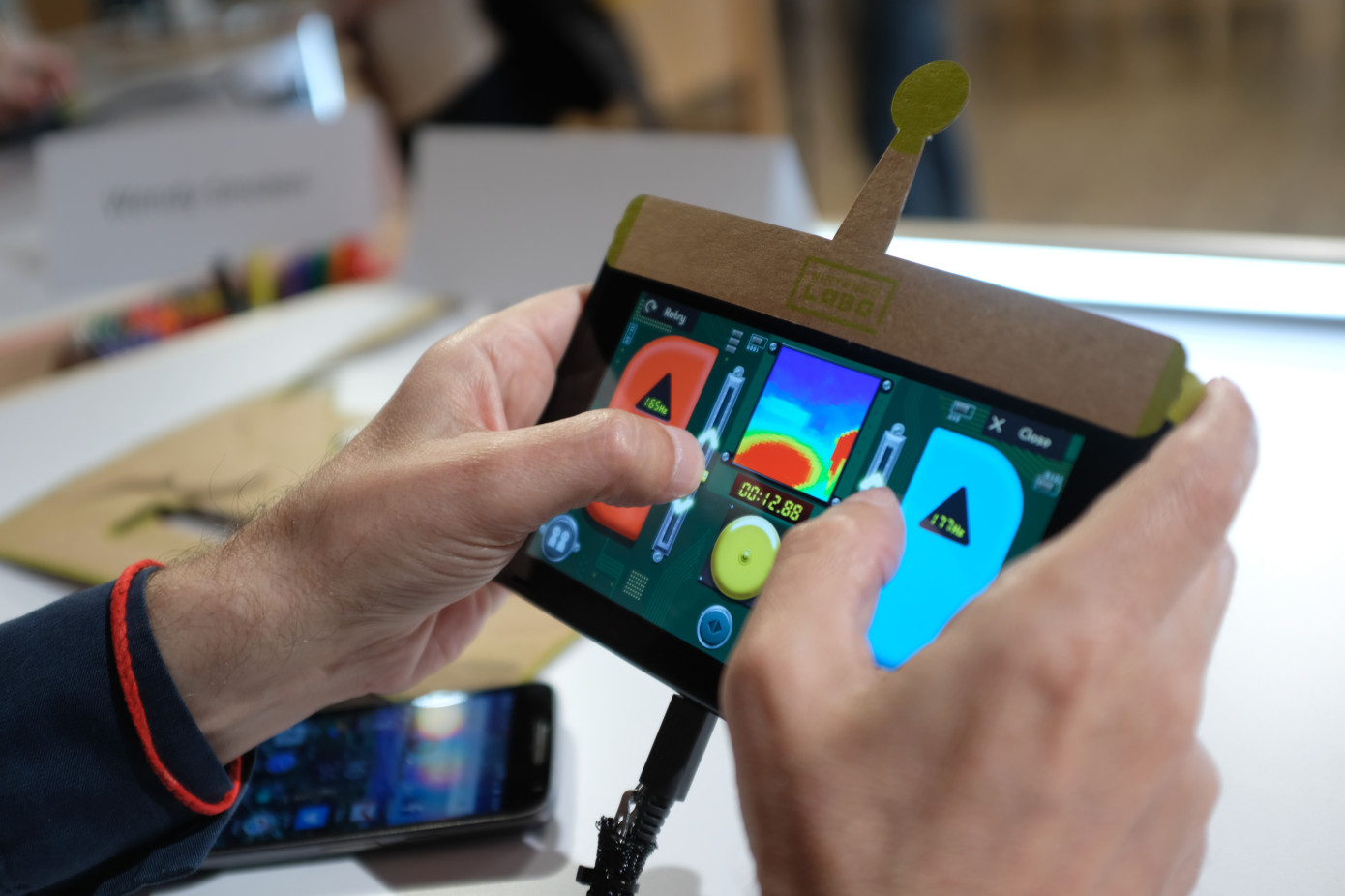
The second hands-on project felt like a considerable step up. Nintendo puts the fishing rod’s build time at one-and-a-half to two-and-a-half hours, versus the cars’ 20 minutes total. In other words, find a comfortable spot, maybe put on some music and make sure you’re hydrated. When it’s done, however, you get a working reel with a string and a rod that vibrates when you catch a fish on screen. Pretty neat.
Having accomplished those in a well-supervised room full of Nintendo employees a few weeks back, I naturally took on the most complex project of the bunch.
Keys to the kingdom
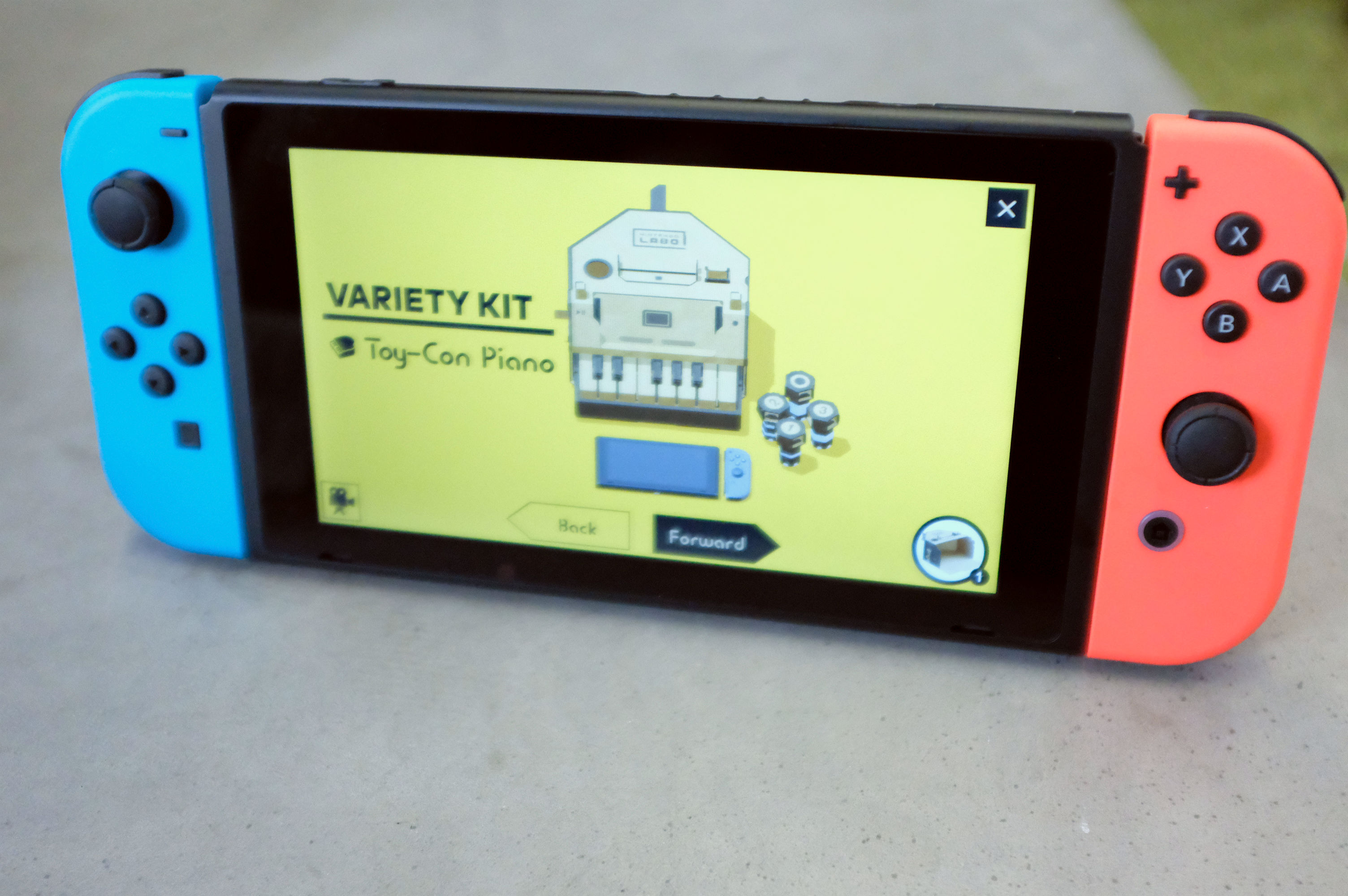
The piano should take two-and-a-half to three-and-a-half hours, by Nintendo’s estimates. I built the thing in about two hours — an accomplishment of sorts for a grown-up person who was supposed to be working. Even so, it reflects just how large of a time sink these projects are. That’s certainly good news for parents looking for the ideal project for a rainy day. It’s a clever little play that leverages a video game system to get them to do something other than play video games. Neat trick, Nintendo.
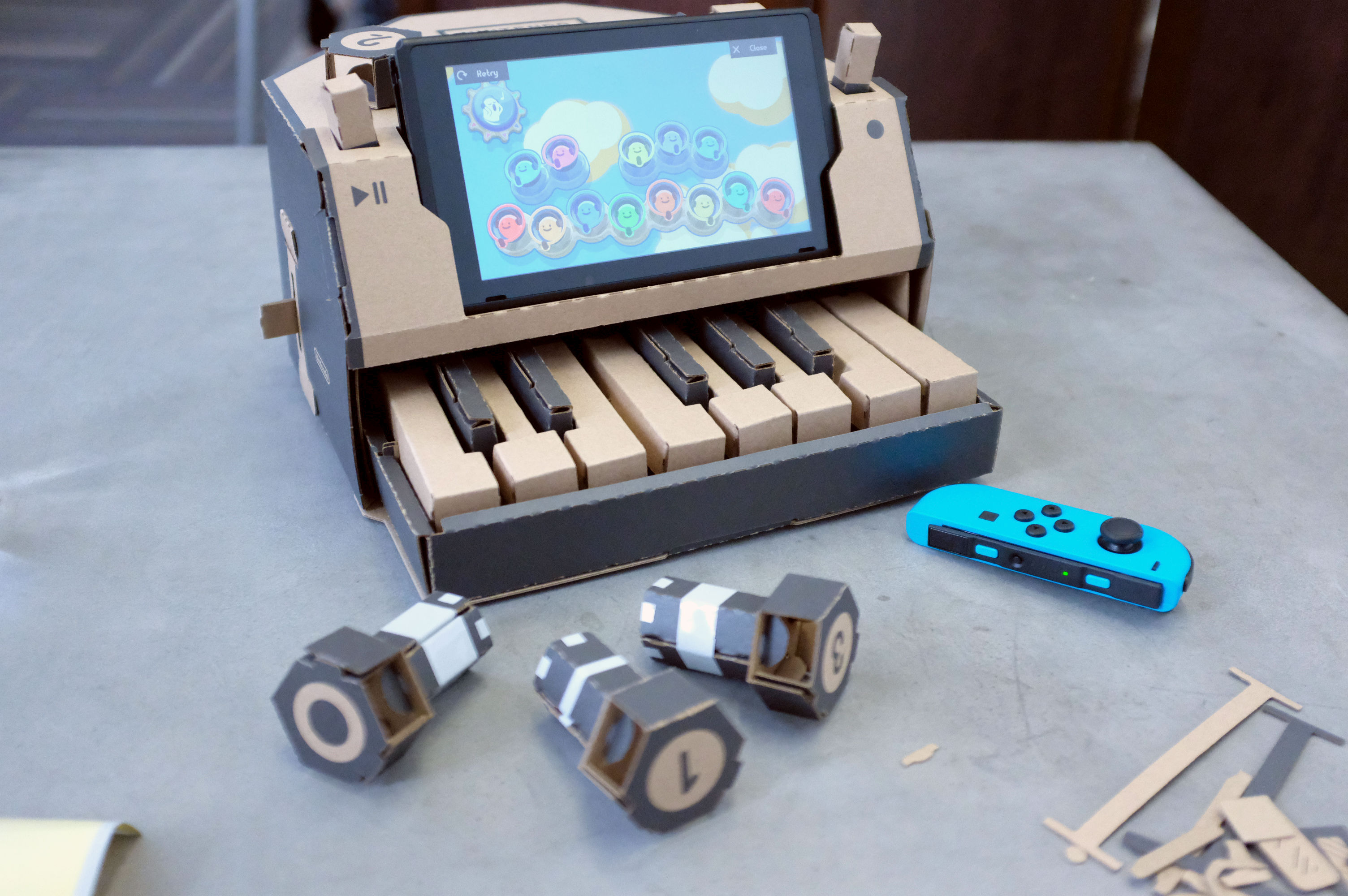
The primary set is a big, flat and heavy box with 28 cardboard sheets, comprising six different projects. There’s a plastic bag inside, too, containing a random assortment of knick knacks — rubber bands, reflective stickers, washers — all of which will come in handy down the road. There’s no real instruction booklet, because the Switch is going to do all of the heavy lifting there.
The screen walks you through the process of building, one patient step a time. The touchscreen instructions are superior to paper in a number of ways, including a number of animated videos showing off the motions of properly working components, and the ability to pivot the camera angles to get a full 360-degree view of the build. You can rewind if you need to back up, or fast-forward when things get repetitive — like they did with the piano’s 13 keys.
Cardbored?
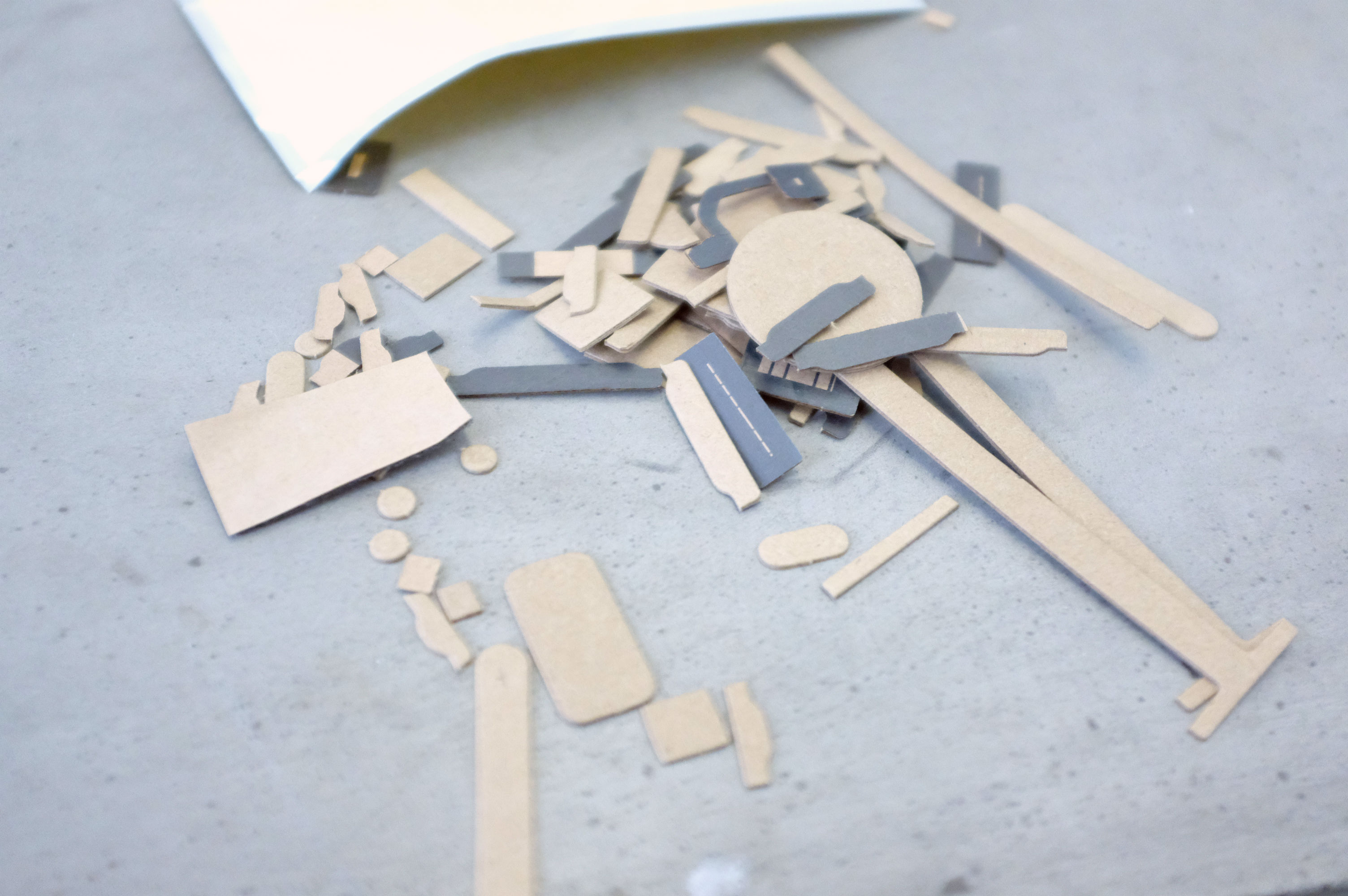
Don’t go too fast, though. The kit tosses some curve balls at you — as in the case of some tabs that are folded inward, to double as springs. That, however, is the one constant. Folding. So, so much folding. Honestly, it gets pretty tedious on the longer projects. The instructions actually make light of this fact, from time to time, with little quips about the repetition. It also recommends stepping away before a particularly grueling section — probably the right move for both your sanity and health.
Once you get into the rhythm, however, it’s strangely meditative. Tap, fold. Tap, fold. Tap, fold. Tap, fold. Tap, fold. Tap, fold. Tap, fold. Tap, fold. Tap, fold. Tap, fold. Tap, fold. Tap, fold. Tap, fold. Tap, fold. Tap, fold. Tap, fold. Tap, fold. Tap, fold. Tap, fold. Tap, fold. Tap, fold. Tap, fold. Tap, fold. Tap, fold. Tap, fold. Tap, fold. Tap, fold. Tap, fold. Tap, fold. Tap, fold. Tap, fold. Tap, fold. Tap, fold. Tap, fold. Tap, fold. Tap, fold. Tap, fold. Tap, fold. Tap, fold. Tap, fold. Tap, fold. Tap, fold. Tap, fold. Tap, fold. Tap, fold. Tap, fold. Tap, fold. Tap, fold. Tap, fold. Tap, fold. Tap, fold. Tap, fold. Tap, fold. Tap, fold. Tap, fold. Tap, fold. Tap, fold. Tap, fold. Tap, fold. Tap, fold. Tap, fold. Tap, fold.
Congratulations, you’ve completely 1/6 steps.
I’d say it’s not the destination, it’s the journey, but honestly, it’s really about the destination here. The most satisfying part in all of this was how seemingly abstract shapes lock into place and create a fully formed object. These little kits are truly remarkable feats of engineering in their own right, and in the case of the piano, it’s incredible satisfying to see the object completed — and actually get to play the keys, recognizing the role each individual piece plays in the whole creation.
There are so many smart touches here, from the incorporation of the Joy-Cons, to the use of reflective tape, which triggers the Switch’s built in cameras. It’s that functionality that makes the piano keys play notes through the Switch itself. It also triggers the arms and legs on the robot through a set of pulleys.
It’s equally relieving the moment you realize you did everything right. Though I still had a few instances where I found myself having to backtrack multiple steps, because I’d missed a fold or turned something the wrong way. Also, as the instructions note, folding is at the heart of the project. A bad or incomplete fold can lead to heartbreak at the end. So fold, children. Fold like your lives depend on it.
Building stories
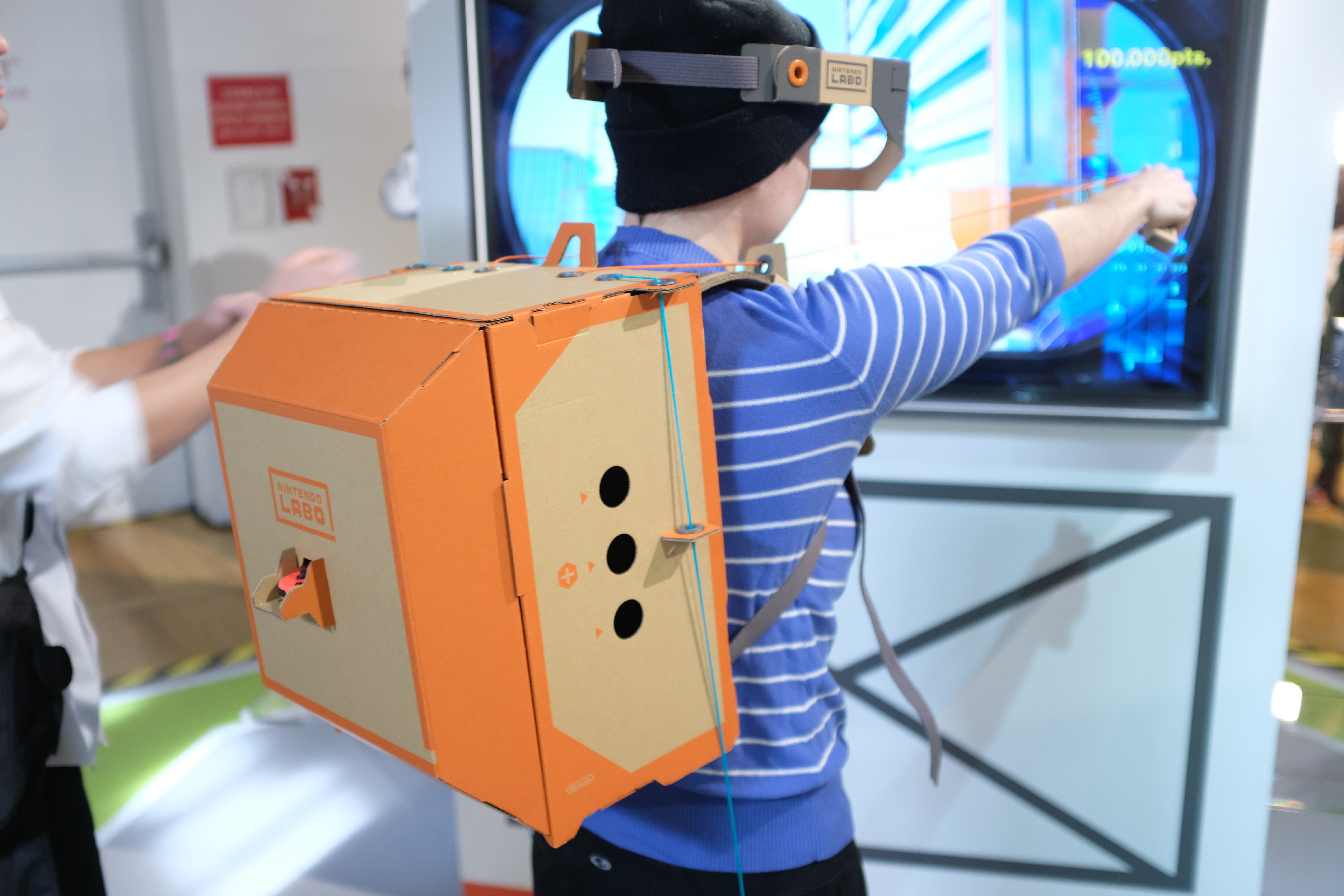
Companies that make coding toys will usually tell you the same thing: it ultimately doesn’t matter that they’re not built in some universal programming language, so long as they teach the fundamentals. The jury is still out on all that, as far as I’m concerned, but I think there’s a lot to be said for a product that’s capable of fostering curiosity and love in some bigger idea. That, I think, is the biggest appeal of Labo. It encourages kids to step outside the console for a minute and build something with their hands.
Does building a Labo piano or fishing rod make you any more qualified to create the real thing? Not really, but it does help foster a genuine interest in the way things work. A maker friend of mine recently related a story to me about how she got into the culture. Her parents came home one day and she had disassembled and reassembled a computer, in order to install a component. From then on, she told me, they came to her for computer help.
Every maker has a story like that — a first step that often involves tearing down a computer or clock or toaster, piece by piece. Labo potentially affords the ability to explore that path without destroying some antique clock in the process. (Though, if it’s successful with your kids, I’d keep a close eye on your piano, if you have one at home.) Parental guidance is also recommended for the more complex projects, making for a great opportunity to bond with kids through creation with a side of frustration. And when you’re done, you’ve got a lovely object that looks like it stepped out of the panels of Calvin & Hobbes.
If your kids don’t have the passion to build — they’ll also learn that lesson pretty quickly. Many kids simply won’t have the patience to sit still and fold for hours on end. It’s also worth pointing out that the objects, when finished, are fragile. They are cardboard, after all. Water is their mortal enemy, and rowdy kids are a close second — pieces can easily rip or tear, even accidentally during the building process. Thankfully, the company has started selling pieces individually.
Of course, $70 isn’t an insignificant amount to pay to find all of that out. And by just about any measure, it’s a pretty steep premium for what amounts to a cardboard box full of cardboard. And, of course, that doesn’t factor in the price of the Switch itself.
But what the kit does afford is continual discovery. From there, kids can graduate to the massive Robot Kit (saving that one for a rainy weekend), which runs $80 and features a complex pulley system and a fun little game where you’re a mech trampling some poor, defenseless city. Even more compelling (and significantly less expensive), however, is Toy-Con Garage.
Built into both packs, the portal lets kids remix and hack creations, offering a breaking down of the technologies involved. If there’s a gateway to the wonderful world of making in this box, it’s this. The pre-determined kits are as much a lesson in following instructions as they are building. Toy-Con Garage, on the other hand, opens the door to true creativity.
Labo is the most bizarre, creative and uniquely Nintendo product since the Switch itself. It’s not for every kid — that much is certain. And the $70 fee will make it cost prohibitive for many parents. But those who take to it will do so like ducks to water — and hopefully won’t get that cardboard wet in the process.
